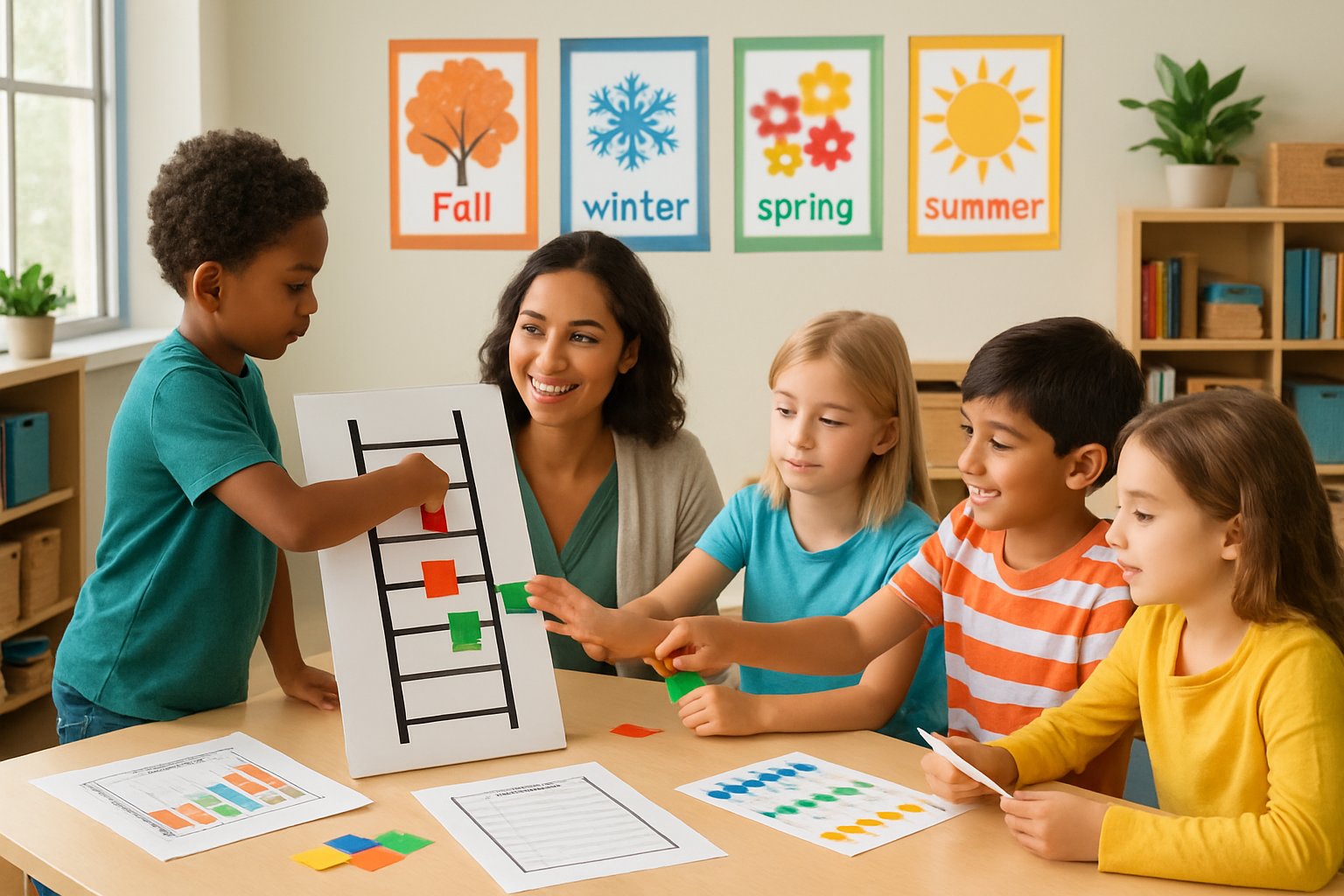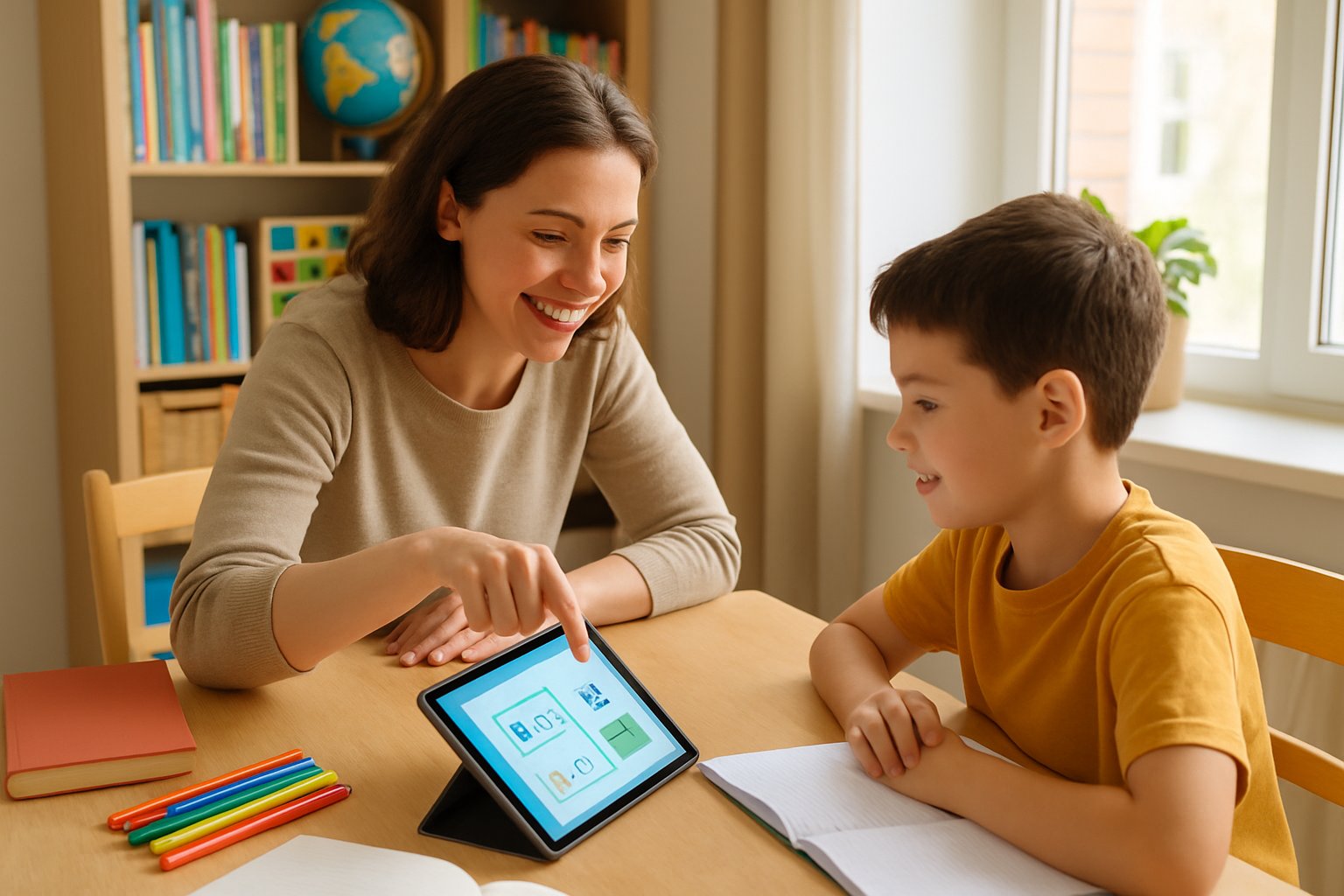Maximizing Small Spaces for Homeschooling
Families who homeschool in small homes often need to think carefully about how they use every corner. A few smart choices with furniture, storage, and layout can make even the smallest area work well for daily lessons and online school activities.
Choosing the Right Learning Nook
A small home does not always allow for a separate homeschool room, so picking a dedicated nook matters. Parents often set up near the kitchen, living room, or even a hallway corner. These spots keep learning areas central and easy to monitor.
Natural light helps children stay focused, so placing a desk or table near a window can be useful. Some families create cozy reading corners with cushions and baskets of books, turning unused spaces into inviting study areas.
Adding simple touches such as a wall map, art prints, or a magnetic board can make the nook both functional and engaging. In one example, a family transformed a narrow window corner with a cushion and rotating books into a themed reading space, showing how small spots can serve big purposes (homeschool solutions for a small home).
Flexible Furniture and Multi-Use Zones
Furniture that serves more than one purpose is especially helpful in small spaces. A foldable table can act as a desk during lessons and tuck away afterward. Storage benches or ottomans can hold supplies while still providing seating.
Rotating activities on small tables keeps lessons fresh. For example, one table might hold science tools like magnifying glasses, while another displays art supplies. This approach makes it easy to shift between subjects without clutter.
Families who use online school often benefit from portable laptop desks or lap trays. These allow children to move between rooms and still have a stable workspace. Multi-use furniture creates flexibility without overwhelming the home.
Embracing Vertical Storage Solutions
When floor space is limited, walls and doors become valuable. Wall-mounted shelves, pegboards, and hooks keep supplies off the ground but within reach. Even a narrow wall can hold a whiteboard or magnetic board for daily tasks.
A clear shoe organizer hung on the back of a door can store pencils, flashcards, and other small items. This keeps tools visible and easy to grab without taking up extra space (homeschool room ideas).
Stackable bins and labeled baskets also make it simple for kids to find what they need. By using vertical space, families keep their homeschool organized, reduce clutter, and create a more open environment for learning.
Creative Storage and Organization Ideas
Families often need storage that saves space while keeping school materials easy to reach. Simple tools like shelves, baskets, and rotation systems can make a small area feel organized and less overwhelming.
Bookshelves and Book Storage
Bookshelves are one of the most practical ways to manage homeschool materials. Even in small spaces, vertical shelving uses wall height instead of floor space. Families can choose freestanding shelves, cube shelving, or even closet shelves to store books, art supplies, and binders.
Cube shelving works well because each cube can hold a different subject or type of material. For example:
| Shelf Type | Best Use | Space Benefit |
|---|---|---|
| Cube Shelving | Dividing subjects or materials | Flexible and modular |
| Hanging Shelves | Displaying current study items | Keeps books at child’s height |
| Closet Shelves | Records, games, extra supplies | Hidden and tidy |
Families who want more ideas can see how creative homeschool storage solutions use closets, under-desk storage, and even under-stairs areas for extra book space.
Utilizing Library Book Baskets
Library book baskets keep borrowed books separate from a family’s own collection. This helps avoid late fees and makes returns faster. A simple wicker or plastic basket by the door or near the homeschool table works well.
Some families use color-coded baskets for each child. Others place all library books in one shared basket. The key is to keep them visible so kids remember to read them before they are due back.
Using a rolling cart as a mobile book basket is another option. It allows the family to move books between the living room, bedroom, or homeschool area. Ideas like these are often suggested in homeschool organization tips for small spaces.
Rotating Learning Materials
Rotating materials prevents clutter and keeps lessons fresh. Instead of leaving every book or activity out, families can store extras in bins or crates and bring them out as needed.
This works especially well for younger children who can become overwhelmed by too many choices. For example, a parent might keep only five puzzles available while the rest stay in storage.
A simple system could look like this:
- Week 1: Science kits, art supplies, and two history books
- Week 2: Math games, geography puzzles, and a new read-aloud
- Week 3: Writing prompts, science experiments, and library books
By rotating, families reduce clutter while creating a sense of novelty. This approach is often paired with portable storage like caddies or storage carts, which are easy to tuck away when not in use.
Decluttering and Personalizing Your Homeschool Area
A small homeschool area works best when it stays clear of extra clutter, uses only the most useful supplies, and reflects the family’s style. A space that feels organized and personal can make daily lessons smoother and more inviting for both parents and children.
Essential Supplies Only
Families who homeschool in tight spaces often benefit from keeping only what they use regularly. Extra books, unused curriculum, or duplicate art supplies can quickly overwhelm shelves and tables. Sorting through items once a month helps prevent buildup.
One practical method is to group materials by how often they are used:
- Daily: pencils, notebooks, math books, reading materials
- Weekly: science kits, art supplies, reference books
- Occasional: seasonal projects, special manipulatives
Storing lesser-used items away from the main learning area frees up space for essentials. Some families use labeled bins or baskets so children know exactly where to return items. Others prefer furniture that doubles as storage, such as a hutch or rolling cart.
Keeping supplies minimal does not mean lacking resources. It means choosing the most effective tools and letting go of what no longer supports learning. This makes the area easier to manage and less stressful to use.
Personal Touches and Decor
Even in a small space, families can make the homeschool area feel warm and welcoming. A few carefully chosen decorations can help children feel ownership of the space. For example, displaying their artwork or rotating seasonal posters adds personality without crowding the room.
Some parents blend school items with home decor so the space looks intentional. In one example, a dining room doubled as a homeschool area by using a large chalkboard that matched the home’s style, as shared on Treehouse Schoolhouse.
Simple touches like a globe on a shelf, a basket of books, or a wall calendar can also serve both educational and decorative purposes. The key is choosing items that inspire learning while keeping the room calm and uncluttered.
Maintaining a Tidy Environment
A tidy homeschool area stays functional only with regular upkeep. Families often find success by setting clear routines for cleanup. For instance, children can return supplies to their bins before moving on to the next subject.
Decluttering weekly helps prevent the buildup of unused materials. A quick review of papers, projects, and supplies ensures that only current items remain in the main space. This habit keeps the area ready for learning each day.
Some parents use visual tools like labeled baskets or color-coded folders so children know where everything belongs. Others schedule a short “reset” time after lessons, which makes the next school day easier to start.
By keeping things simple and consistent, families create an environment that supports focus and reduces stress. A clean, organized space encourages children to treat their homeschool area with care.
Digital and Portable Learning Solutions

Families often face the challenge of limited space when setting up a homeschool area. Using digital tools and portable systems can cut down on clutter while still keeping lessons organized and accessible.
Going Digital to Save Space
Switching to digital resources helps reduce the number of bulky textbooks and paper materials. Many families use online school platforms that provide lessons, assignments, and grading tools in one place. This keeps everything stored electronically rather than spread across shelves and bins.
E-books and audiobooks are another practical option. Instead of storing stacks of novels or reference books, children can access them on a tablet, e-reader, or computer. Subscriptions to library apps or digital curriculum programs allow students to download what they need without filling up physical space.
Digital organization also makes it easier to track progress. Parents can use apps for lesson planning, attendance, and grading. Cloud storage keeps worksheets, projects, and portfolios safe without needing filing cabinets. Families who use shared devices can set up individual folders for each child to keep materials separated and easy to find.
Creating Portable Learning Kits
For families who homeschool in shared spaces like dining rooms, portable kits make setup and cleanup simple. A small rolling cart or handled tote can hold notebooks, pencils, and art supplies. When school time is over, the cart can be wheeled into a corner or closet.
Some families prepare lap desks or clipboards with storage compartments so children can work anywhere. Portable file boxes also help organize worksheets, especially if multiple children are learning at different levels.
Clear bins with labels keep materials grouped by subject, making it easy to grab what’s needed. For example:
| Subject | Portable Storage Idea |
|---|---|
| Math | Small bin with manipulatives, flashcards |
| Reading | Tote with leveled readers, bookmarks |
| Art | Pencil box with crayons, scissors, glue |
These mobile setups allow learning to happen in any room without leaving clutter behind.









